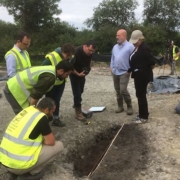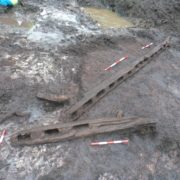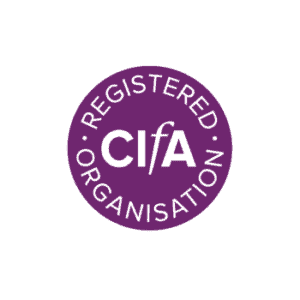N69 Listowel Bypass Project
These mini-documentaries were created as part of cataloguing the archaeological works on the N69 Listowel Bypass Project.
Click on the tabs below to watch. Each video lasts for just over 10 minutes.
Vernacular Cottage
Archaeological Excavations
Glossary of Terms Used
Glossary
- Anthropogenic: Any changes in nature made by people.
- Bulk Sample: The systematic collection of soils from archaeological deposits for further scientific analysis.
- CPO: Compulsory Purchase Order (or the full extent/footprint of the proposed road).
- Geophysical Survey: A non-invasion method of detecting and mapping buried archaeology.
- Metal Detection: Use of a metal detector to search for metal artefacts in soils or under water (a metal detector can only be used with a licence issued by the National Monuments Service & the National Museum of Ireland).
- Stage (i): The first stages of on-site work such as digging test trenches and undertaking surveys, for example, building and geophysical surveys etc.
- Stage (ii): This occurs following the completion of Stage (i) testing – when archaeological remains have been found the surrounding area is stripped back to reveal their full extents.
- Stage (iii): This is when archaeological excavation is undertaken.
- Stage (iv): The post-excavation stage where specialist work is undertaken (e.g. finds analysis, radiocarbon dating etc), and reports and publications are produced.
 AMS
AMSThe Archaeology of the Listowel Bypass
Download a poster showcasing some of the archaeological finds from excavations along the N69 Bypass. Alternatively, you can read through a StoryMap of the dig.

Video Documentaries
As part of cataloguing the archaeological works on the N69 Listowel Bypass Project, a set of mini-documentaries were created. Each of these lasts just over 10 minutes.
 AMS
AMSFulachtaí Fia at Listowel
Five burnt mounds, also referred to as fulachtaí fia, were discovered along the route of the bypass. Burnt mounds are the most common prehistoric site type in Ireland.
 AMS
AMSMaking Medieval Charcoal
At Coolnaleen Lower we found several charcoal-production kilns. Charcoal was an important fuel for metalworking in the past.
 AMS
AMSPalaeo-environmental Coring
As part of the archaeological investigations for the N69, palaeoenvironmental specialists Carlos Chique and Karen Molloy from NUIG took a pollen core from Derra West Bog.
 AMS
AMSFrom the Bog
In the townland of Gortcurreen, a group of worked timbers and the remains of a stave-built wooden vessel were discovered within the peat.

An Old House at Curraghatoosane
At Curraghatoosane we found the remains of a traditional thatched house that was occupied from the early nineteenth century until the 1950s.



 AMS
AMS AMS
AMS